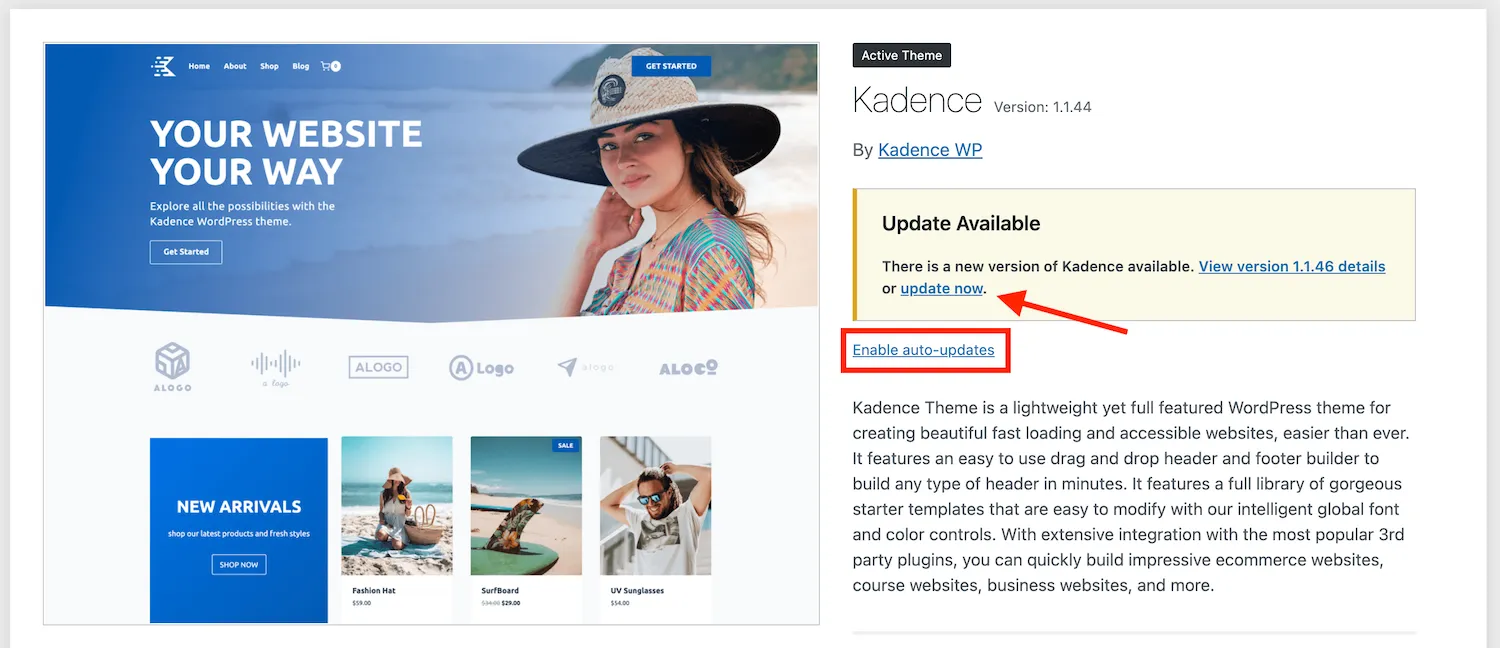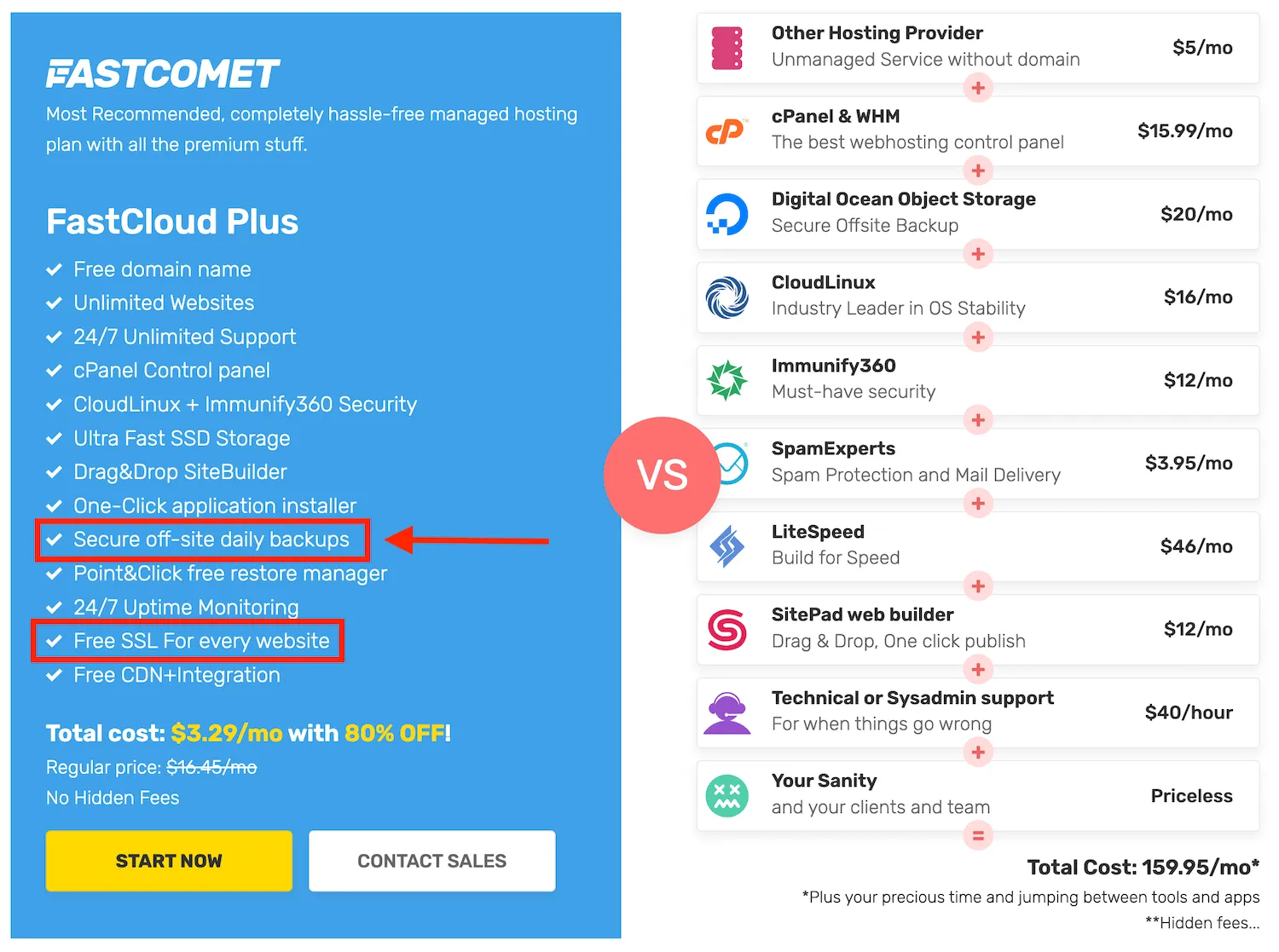There’s no question that your website is one of your biggest assets in today’s digital age.
As a blogger and website owner, you’ve poured endless hours into building it up and making it stunning.
But how secure is your slice of the digital world? More critically, do you know how to secure your site?
“Even the smallest blog can become the target of hackers. This makes website security not just an option, but a necessity for everyone.”
In this post, we’ll discuss and learn how to make a website secure. From installing an SSL certificate to a password manager.
How to Secure A Website?
Here are 7 steps you can take to create a secure site:
Step 1: Use Strong Passwords and Enable Two-Factor Authentication
Protecting your website starts with securing access to it.
One effective way to do this is by using strong passwords and enabling two-factor authentication.
A strong password includes upper and lowercase letters, numbers, and special characters.

Avoid using predictable words or phrases, and ensure your password is at least 12 characters long. A secure password can protect your site from hackers.
In addition to using strong passwords, enabling two-factor authentication provides an extra layer of security.
This feature requires a user to provide two forms of identification – typically a password and a code sent to their mobile phone – to gain access to your website.
This way, even if a hacker manages to crack your password, they still won’t be able to access your website without the second factor of authentication.
You can reduce the risk by limiting website login access to authorized individuals. It’s really important, especially if you have a business website.
Step 2: Install an SSL Certificate to Encrypt Data
One of the most crucial steps in securing your website is installing an SSL certificate. SSL, or Secure Sockets Layer, encrypts the data transmitted between a visitor’s browser and your website, making it unreadable to any potential third-party interceptors.
When you get an SSL certificate on your website, your site’s address will begin with “https” instead of “http.” The “s” stands for “secure,” indicating that any data transmitted through your website is encrypted and protected.
Without an SSL certificate, your website is vulnerable to security breaches, as data transmitted over an unsecured connection can be intercepted and read by malicious actors.
How to Install an SSL Certificate
- If your web hosting service offers SSL certificates for free, you can typically install them through your hosting control panel. Look for the SSL/TLS section and follow the instructions to install.
- If you use a content management system like WordPress, you can install them through a plugin. Some popular SSL plugins include Let’s Encrypt and Really Simple SSL.
- Install an SSL certificate manually by generating a certificate signing request (CSR) and submitting it to a certificate authority (CA) for verification.
Once your SSL certificate is installed, update all internal links on your website to the new “https” address to ensure that all pages are secure.
Step 3: Keep Your Website and Software Up-to-Date

Keep your website up-to-date. Regular updates help keep your site less vulnerable to hackers.
To update your website, ensure you are regularly checking for updates from your content management system (CMS) and applying them promptly.

New updates may patch data breaches or address other issues, so keeping your WordPress current is essential for a secure website.
Additionally, update any plugins or software you are using on your website regularly. Outdated plugins can often be a target for hackers looking to exploit known vulnerabilities.
However, by keeping your software up-to-date, you can strengthen your website’s defenses against such risks.
When updating your website and software, be sure to follow best practices and back up your website before making any significant changes. Regular backups can act as a safety net if anything goes wrong during the updates.
Overall, regularly updating your website and software is a crucial step to keep your site secure.
Step 4: Implement Web Application Firewalls and Security Plugins
To secure a website from various threats, such as hackers and bots, implementing web application firewalls and security plugins is crucial.
These security measures act as an added layer of protection, preventing malicious attacks from exploiting vulnerabilities.
Web Application Firewalls
A web application firewall (WAF) is a security solution that filters out malicious traffic and blocks unauthorized access to your website.
It analyzes HTTP traffic, identifying potential security threats like cross-site scripting and SQL injection attacks and preventing them from reaching your website.
The use of a WAF is an effective way to protect your website from attacks that may bypass conventional security measures.
Security Plugins
Security plugins are software designed to make your website more secure by detecting and preventing security threats.
They may scan your website for vulnerabilities, block unwanted traffic, and log user activity.
These plugins can also provide notifications of potential security risks and offer guidance on addressing them.
If you use WordPress website builder, some popular security plugins include Wordfence, iThemes Security, and Sucuri Security.
Using web application firewalls and security plugins are essential security measures to prevent a hack into your website.
These solutions help prevent unauthorized access and protect your website against vulnerabilities, providing peace of mind while keeping your website secure.
Step 5: Backup Your Website Regularly
To ensure quick and efficient recovery of website data and content in case of unexpected issues or data loss, it’s important to have a reliable backup system in place.

You can use a backup plugin or service provided by your hosting provider. FastComet, for example, provides daily backups and also free SSL for every website.
Alternatively, you can use an FTP client to download your website files and database to your local computer.
It’s essential to schedule regular backups to ensure that you have an up-to-date copy of your website data in case of emergencies.
Depending on your website’s frequency of updates and content changes, you can choose to backup your website daily, weekly, or monthly.
It’s also important to store your backups in a secure location, either on a different server or cloud storage service. This way, you can easily access them in case of a hacked website.
Back up your website regularly to keep your website data safe and secure. By doing so, you can quickly restore your website and minimize the damage caused by website breaches or data loss.
Step 6: Choose a Reliable Web Hosting and Content Management System
Choosing the right web hosting and content management system (CMS) is crucial in securing your website.
All your website files are stored on your web hosting server. It is essential to choose a secure and dependable provider.
One option for a secure CMS is WordPress. WordPress is a popular platform that offers various security features.
However, it’s essential to choose a reputable web hosting service that specializes in WordPress hosting to ensure optimal security.
Some WordPress hosting providers even offer automatic backups and updates.
When selecting a web host and CMS, consider their security features, reputation, and customer support. Don’t skimp on the cost of hosting, as cheaper options may compromise your website’s security.
Remember, investing in reliable web hosting and CMS is an investment in the overall security of your website.
Step 7: Regularly Scan Your Website for Vulnerabilities
Regularly scanning your website is crucial to identify and address potential security risks. There are always new methods being discovered by hackers to take advantage of weaknesses.
Conducting routine scans can help you detect security issues before they cause any damage.
With the help of a website scanner, you can check your site for security vulnerabilities and protect your site from cyber threats.
These scanners crawl through your website, searching for potential weaknesses that attackers could exploit to gain unauthorized access to your website or sensitive information.
There are many ways to protect your website, and website scanning is an essential part of website security. By scanning your site regularly, you can identify potential vulnerabilities early on and take the necessary steps to address them before they turn into larger issues.
Make sure to choose a reputable website scanner to receive accurate and reliable results. After scanning your site, review the reports and address any security vulnerabilities that are identified as soon as possible.
Wrap-Up
Securing your website is crucial to protect your online presence and keep your website safe from potential threats.
By following the seven steps outlined in this article, you can strengthen your website’s security and avoid security issues.
Prioritizing website security is critical to protect your online presence, website files, and data. By implementing these security measures, you can secure your website, boost your visitors’ trust, and protect your website from hackers and bots.
Protect your website today and stay safe online!






